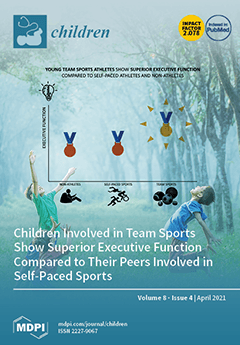Introduction: The continuously increasing prevalence of childhood obesity is reaching epidemic proportions. Greece is among the countries with the highest childhood obesity prevalence rates. The present study aims to identify psychosocial factors associated with excess body weight of adolescents. Methods: This case-control study was conducted in Athens, Greece, and included 414 adolescents aged 11–18 years. Anthropometric measurements were recorded, and an anonymous self-completed questionnaire captured the psychosocial background, family environment, peer relations, and school environment. Results: Of the total sample of adolescents, 54.6% had normal body weight and 45.4% were overweight or obese. A multivariate logistic regression analysis showed that the factors related to the presence of overweight/obesity were adolescents’ age (OR = 0.416,
p < 0.001), area of residence, presence of anxiety (OR = 4.661,
p = 0.001), presence of melancholia (OR = 2.723,
p = 0.016), participation in sports (OR = 0.088,
p <0.001), smoking (OR = 0.185,
p = 0.005), and mother’s occupation (OR = 0.065,
p < 0.001). Conclusion: Psychological problems, maternal occupation, the absence of physical activity, and poor school performance were associated with adolescent overweight/obesity. It is important that screening for the presence of psychosocial issues is included in childhood obesity policies and treatment.
Full article






